Mardi Gras
from wikipedia.org
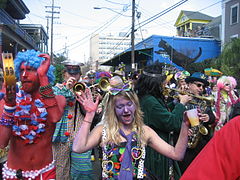 Mardi Gras, or Fat Tuesday, refers to events of the Carnival celebration, beginning on or after the Christian feasts of the Epiphany (Three Kings Day) and culminating on the day before Ash Wednesday, which is known as Shrove Tuesday. Mardi Gras is French for "Fat Tuesday", reflecting the practice of the last night of eating rich, fatty foods before the ritual Lenten sacrifices and fasting of the Lenten season.
Related popular practices are associated with Shrovetide celebrations before the fasting and religious obligations associated with the penitential season of Lent. In countries such as the United Kingdom, Mardi Gras is also known as Shrove Tuesday, which is derived from the word shrive, meaning "to administer the sacrament of confession to; to absolve".
History
Mardi Gras, or Fat Tuesday, refers to events of the Carnival celebration, beginning on or after the Christian feasts of the Epiphany (Three Kings Day) and culminating on the day before Ash Wednesday, which is known as Shrove Tuesday. Mardi Gras is French for "Fat Tuesday", reflecting the practice of the last night of eating rich, fatty foods before the ritual Lenten sacrifices and fasting of the Lenten season.
Related popular practices are associated with Shrovetide celebrations before the fasting and religious obligations associated with the penitential season of Lent. In countries such as the United Kingdom, Mardi Gras is also known as Shrove Tuesday, which is derived from the word shrive, meaning "to administer the sacrament of confession to; to absolve".
History
133–31 BC Some think Mardi Gras may be linked with the ancient Roman pagan celebrations of spring and fertility such as Saturnalia, which dates back to 133–31 BC. This celebration honored the god of agriculture, Saturn. It was observed in mid-December, before the sowing of winter crops. It was a week-long festival when work and business came to a halt. Schools and courts of law closed, and the normal social patterns were suspended. On the Julian calendar, which the Romans used at the time, the winter solstice fell on December 25. Hence, the celebration gradually became associated with Christmas. Traditions
The festival season varies from city to city, as some traditions, such as the one in New Orleans, Louisiana, consider Mardi Gras to stretch the entire period from Twelfth Night (the last night of Christmas which begins Epiphany) to Ash Wednesday. Others treat the final three-day period before Ash Wednesday as the Mardi Gras. In Mobile, Alabama, Mardi Gras–associated social events begin in November, followed by mystic society balls on Thanksgiving, then New Year's Eve, followed by parades and balls in January and February, celebrating up to midnight before Ash Wednesday. In earlier times, parades were held on New Year's Day. Carnival is an important celebration in Anglican and Catholic European nations.
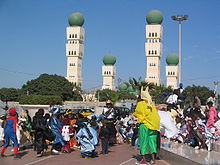
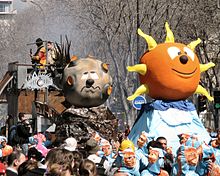
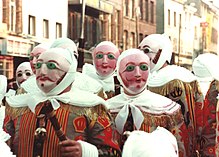
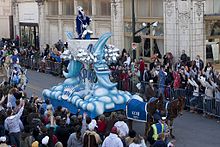 In 1723, the capital of Louisiana was moved to New Orleans, founded in 1718. The first Mardi Gras parade held in New Orleans is recorded to have taken place in 1837. The tradition in New Orleans expanded to the point that it became synonymous with the city in popular perception, and embraced by residents of New Orleans beyond those of French or Catholic heritage. Mardi Gras celebrations are part of the basis of the slogan Laissez les bons temps rouler ("Let the good times roll"). On Mardi Gras Day, the Tuesday before Ash Wednesday, the last parades of the season wrap up and the celebrations come to a close with the Meeting of the Courts (known locally as the Rex Ball). Other cities along the Gulf Coast with early French colonial heritage, from Pensacola, Florida; Galveston, Texas; to Lake Charles and Lafayette, Louisiana; and north to Natchez, Mississippi and Alexandria, Louisiana, have active Mardi Gras celebrations.
Galveston's first recorded Mardi Gras celebration, in 1867, included a masked ball at Turner Hall (Sealy at 21st St.) and a theatrical performance from Shakespeare's "King Henry IV" featuring Alvan Reed (a justice of the peace weighing in at 350 pounds!) as Falstaff. The first year that Mardi Gras was celebrated on a grand scale in Galveston was 1871 with the emergence of two rival Mardi Gras societies, or "Krewes" called the Knights of Momus (known only by the initials "K.O.M.") and the Knights of Myth, both of which devised night parades, masked balls, exquisite costumes and elaborate invitations. The Knights of Momus, led by some prominent Galvestonians, decorated horse-drawn wagons for a torch lit night parade. Boasting such themes as "The Crusades," "Peter the Great," and "Ancient France," the procession through downtown Galveston culminated at Turner Hall with a presentation of tableaux and a grand gala.
In the rural Acadiana area, many Cajuns celebrate with the Courir de Mardi Gras, a tradition that dates to medieval celebrations in France.
St. Louis, Missouri, founded in 1764 by French fur traders, claims to host the second largest Mardi Gras celebration in the United States. The celebration is held in the historic French neighborhood, Soulard, and attracts hundreds of thousands of people from around the country. Although founded in the 1760s, the St. Louis Mardi Gras festivities only date to the 1980s. The city's celebration begins with "12th night," held on Epiphany, and ends on Fat Tuesday. The season is peppered with various parades celebrating the city's rich French Catholic heritage.
Costumes
In 1723, the capital of Louisiana was moved to New Orleans, founded in 1718. The first Mardi Gras parade held in New Orleans is recorded to have taken place in 1837. The tradition in New Orleans expanded to the point that it became synonymous with the city in popular perception, and embraced by residents of New Orleans beyond those of French or Catholic heritage. Mardi Gras celebrations are part of the basis of the slogan Laissez les bons temps rouler ("Let the good times roll"). On Mardi Gras Day, the Tuesday before Ash Wednesday, the last parades of the season wrap up and the celebrations come to a close with the Meeting of the Courts (known locally as the Rex Ball). Other cities along the Gulf Coast with early French colonial heritage, from Pensacola, Florida; Galveston, Texas; to Lake Charles and Lafayette, Louisiana; and north to Natchez, Mississippi and Alexandria, Louisiana, have active Mardi Gras celebrations.
Galveston's first recorded Mardi Gras celebration, in 1867, included a masked ball at Turner Hall (Sealy at 21st St.) and a theatrical performance from Shakespeare's "King Henry IV" featuring Alvan Reed (a justice of the peace weighing in at 350 pounds!) as Falstaff. The first year that Mardi Gras was celebrated on a grand scale in Galveston was 1871 with the emergence of two rival Mardi Gras societies, or "Krewes" called the Knights of Momus (known only by the initials "K.O.M.") and the Knights of Myth, both of which devised night parades, masked balls, exquisite costumes and elaborate invitations. The Knights of Momus, led by some prominent Galvestonians, decorated horse-drawn wagons for a torch lit night parade. Boasting such themes as "The Crusades," "Peter the Great," and "Ancient France," the procession through downtown Galveston culminated at Turner Hall with a presentation of tableaux and a grand gala.
In the rural Acadiana area, many Cajuns celebrate with the Courir de Mardi Gras, a tradition that dates to medieval celebrations in France.
St. Louis, Missouri, founded in 1764 by French fur traders, claims to host the second largest Mardi Gras celebration in the United States. The celebration is held in the historic French neighborhood, Soulard, and attracts hundreds of thousands of people from around the country. Although founded in the 1760s, the St. Louis Mardi Gras festivities only date to the 1980s. The city's celebration begins with "12th night," held on Epiphany, and ends on Fat Tuesday. The season is peppered with various parades celebrating the city's rich French Catholic heritage.
Costumes
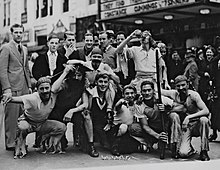 Mardi Gras, as a celebration of life before the more-somber occasion of Ash Wednesday, nearly always involves the use of masks and costumes by its participants. In New Orleans, for example, these often take the shape of fairies, animals, people from myths, or various Medieval costumes as well as clowns and Indians (Native Americans). However, many costumes today are simply elaborate creations of colored feathers and capes. Unlike Halloween costumery, Mardi Gras costumes are not usually associated with such things as zombies, mummies, bats, blood, and the like, though death may be a theme in some. The Venice tradition has brought golden masks into the usual round of costumes.
Exposure by women
Mardi Gras, as a celebration of life before the more-somber occasion of Ash Wednesday, nearly always involves the use of masks and costumes by its participants. In New Orleans, for example, these often take the shape of fairies, animals, people from myths, or various Medieval costumes as well as clowns and Indians (Native Americans). However, many costumes today are simply elaborate creations of colored feathers and capes. Unlike Halloween costumery, Mardi Gras costumes are not usually associated with such things as zombies, mummies, bats, blood, and the like, though death may be a theme in some. The Venice tradition has brought golden masks into the usual round of costumes.
Exposure by women
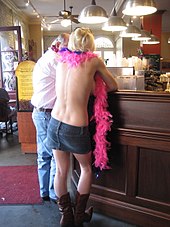 Women exposing their breasts during Mardi Gras in New Orleans, US, has been documented since 1889, when the Times-Democrat decried the "degree of immodesty exhibited by nearly all female masqueraders seen on the streets." The practice was mostly limited to tourists in the upper Bourbon Street area. In the crowded streets of the French Quarter, generally avoided by locals on Mardi Gras Day, flashers on balconies cause crowds to form on the streets.
In the last decades of the 20th century, the rise in producing commercial videotapes catering to voyeurs helped encourage a tradition of women baring their breasts in exchange for beads and trinkets. Social scientists studying "ritual disrobement" found, at Mardi Gras 1991, 1,200 instances of body-baring in exchange for beads or other favors.
Women exposing their breasts during Mardi Gras in New Orleans, US, has been documented since 1889, when the Times-Democrat decried the "degree of immodesty exhibited by nearly all female masqueraders seen on the streets." The practice was mostly limited to tourists in the upper Bourbon Street area. In the crowded streets of the French Quarter, generally avoided by locals on Mardi Gras Day, flashers on balconies cause crowds to form on the streets.
In the last decades of the 20th century, the rise in producing commercial videotapes catering to voyeurs helped encourage a tradition of women baring their breasts in exchange for beads and trinkets. Social scientists studying "ritual disrobement" found, at Mardi Gras 1991, 1,200 instances of body-baring in exchange for beads or other favors.